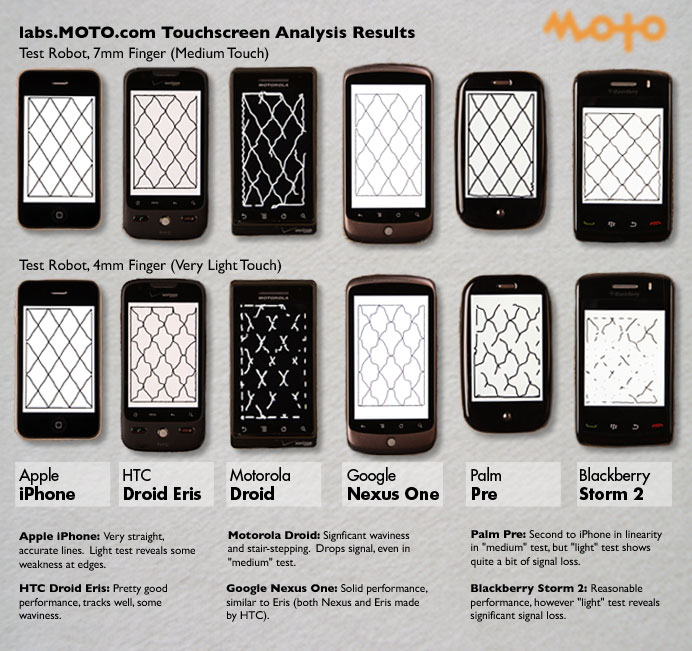Back in January, the Moto Development Group tested the efficiency and accuracy of capacitive touchscreens across a number of devices. When the dust settled, the iPhone’s touchscreen reigned supreme. But not everyone was convinced that the testing was all that telling, particularly because it was done with a human finger, making the test prone to human error and inconsistent tracking.
After we published our first comparison of four touchscreen smartphones, a few critics found fault with our DIY testing technique. Many of of these comments centered around the idea that our human-finger methodology is prone to inconsistency, due to variables in finger pressure, line-straightness, or tracing speed.
To address those valid concerns, the Moto Development Group conducted the same exact test only this time instead of using a human finger, then used a robotic finger to ensure consistency across all devices. And they also added the Palm Pre into the equation since there are apparently a few Pre owners out in the wild. Who knew.
The results?
The iPhone once again stands victorious. In the photo below, note that straight lines denote more a more accurate and precise capacitive touchscreen. (Click on the photo for a larger image).

The iPhone touchscreen is clearly the best of the bunch, followed sort of closely by the Google Nexus One. For a device that received a lot of hype, the touchscreen on the Motorola Droid looks absolutely atrocious. Meanwhile both the BlackBerry Storm 2 and the Palm Pre aren’t up to par when used with a light touch.
You can check out a video of the testing and the results below.
Robot Touchscreen Analysis from MOTO Development Group on Vimeo.





Wed, Mar 24, 2010
Featured, News